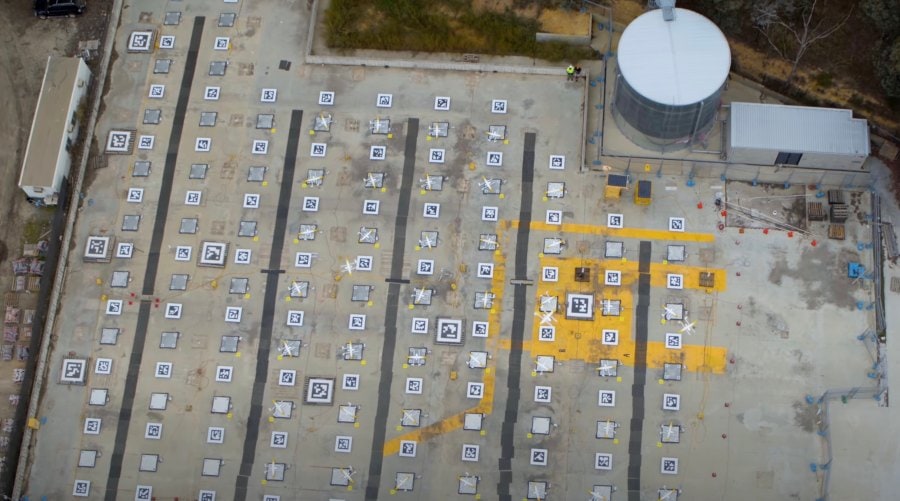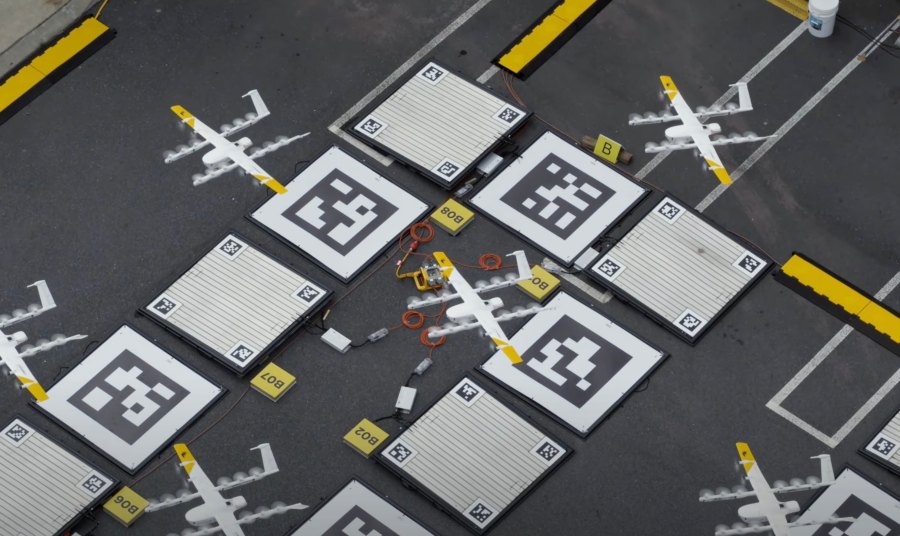How Can Drone Delivery Scale from Thousands to Millions? Wing’s New Network May Be the Solution
BY Zacc Dukowitz
14 March 2023Wing has unveiled a new approach to drone delivery that will allow its drones to make more deliveries with fewer stops, potentially revolutionizing the delivery process.
Called the Wing Delivery Network, Wing’s drones will be able to autonomously load and deliver several packages in a row without having to return to the warehouse.
Most drone delivery programs operate out of a centralized hub—typically a warehouse or fulfillment center.
The drone is loaded in that hub with a single package, then delivers it. After that delivery, the drone goes back to the warehouse for another package, and so on.
DroneUp’s delivery programs with Walmart operate this way, with its fulfillment hubs located at the Walmart it’s delivering from. Zipline also operates this way, with a single location used to load a drone with medical supplies, after which the drone is deployed to make the delivery.
The problem is that this approach isn’t scalable.
The only future for drone delivery is a level of scale that’s commensurate with other forms of delivery. [We’re] talking about millions and millions of boxes every day.
– Adam Woodworth, CEO of Wing
Since each drone can only carry one delivery at a time, and has to return to reload, it will always be limited in its ability to make faster deliveries by how far it is from a warehouse.
But for drone delivery to actually work and meet the demand for millions of deliveries we currently have in the U.S., scalability is key.
How the Wing Delivery Network Works
The new Wing Delivery Network presents a novel solution to this problem: a decentralized delivery chain that doesn’t rely on a single hub for loading deliveries.


Credit: Wing
The approach is similar to the one Uber uses for ride sharing.
With Uber, drivers are found from those in the area, not sent out specifically from a driver hub to pick up riders. With Wing, drones already in the area will be used to fulfill delivery requests, instead of being sent out from a warehouse.
Here’s how it works:
- First delivery requested and fulfilled. A delivery drone leaves the warehouse with a package, and delivers it.
- Second delivery requested. Once in the field, the drone gets another request for a delivery.
- Second delivery fulfilled. The drone then goes on to pick up another delivery at a store—not at a warehouse—and deliver it.
The process continues, with the drone potentially making several deliveries before finally returning to the hub where it started.
Because the drone is delivering while already in the field it can be nimble, responding to requests in real time and reducing the delays that come from having to return to a warehouse for each package.


Credit: Wing
To work, the network requires three pieces of technology:
- The delivery drone
- Charging pads for takeoff and landing (shown in the photo above)
- Autoloader stations for loading packages onto the drones
The Autloader stations are a key part of the network, since they allow drones to pick up packages autonomously.
As Wing has pointed out, curbside delivery has already paved the way for enabling Autoloaders. The spaces dedicated to curbside pickup present a perfect spot for placing Autoloaders, allowing for a smooth integration of drones into the way stores already support delivery.
Store employees can prepare the order, then a drone can come and pick them up autonomously by lowering a rope—the same rope that’s used to later make the delivery.
With this decentralized approach to drone deliveries, the entire system becomes a data network that manages the complexities of route management for the fleet, rather than just a transportation system.


Credit: Wing
Tens of Millions of Deliveries by 2024
So why does all of this matter?
Because Wing may have found a way to go from a few hundred or a few thousand deliveries a year—DroneUp notably performed over 6,000 thousand last year—to tens of million.
In unveiling the Wing Delivery Network, its CEO has shared the company’s ambitious goal: to be making tens of millions of deliveries for millions of consumers by next year.
The whole point of this is to make it so that drone delivery is part of the rest of delivery . . . over the coming year we’ll be rolling out different pieces of [the] technology stack and we aim by mid 2024 to have the capability to really deliver on the promise of moving millions of boxes.
– Adam Woodworth, CEO of Wing
Wing has been growing rapidly over the last few years, and innovating as it grows.
The company has created command centers to monitor its autonomous drones as they do deliveries, and it’s now making deliveries in Texas and Virginia in the U.S., as well as in Australia.
On average, Wing can currently deliver about 1,000 packages a day by drone in an operating region of over 100,000. As it rolls out its new network this capability promises to expand significantly, but there is still a long way to go from its current operations to the millions slated for 2024.


